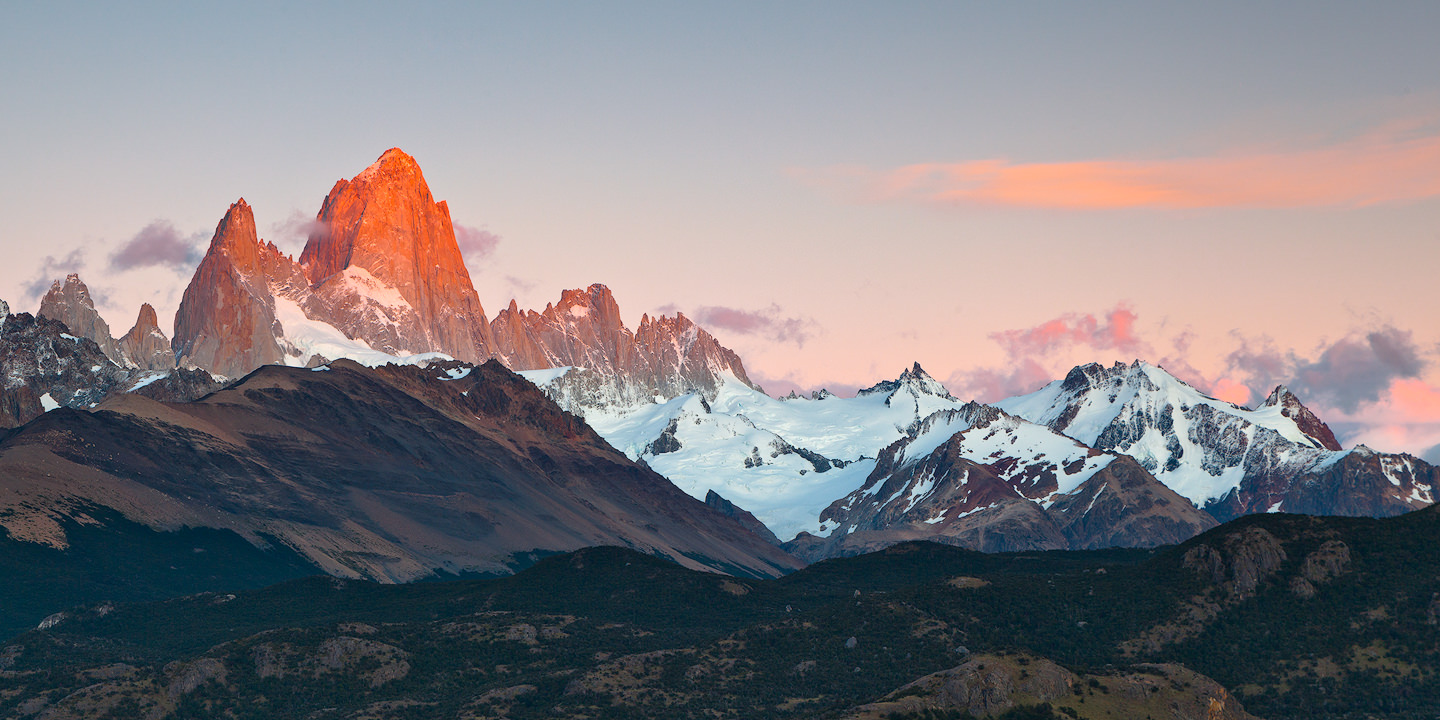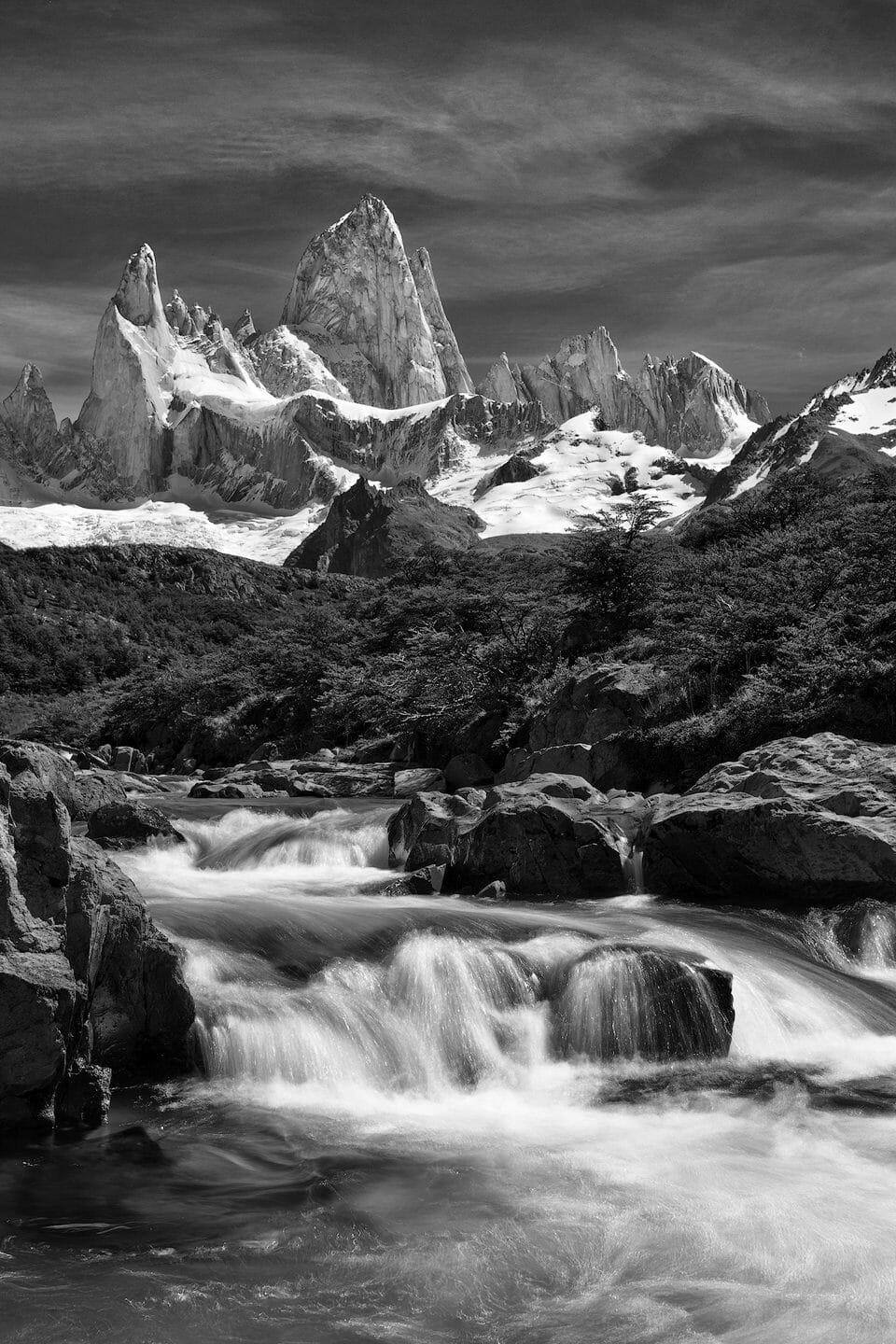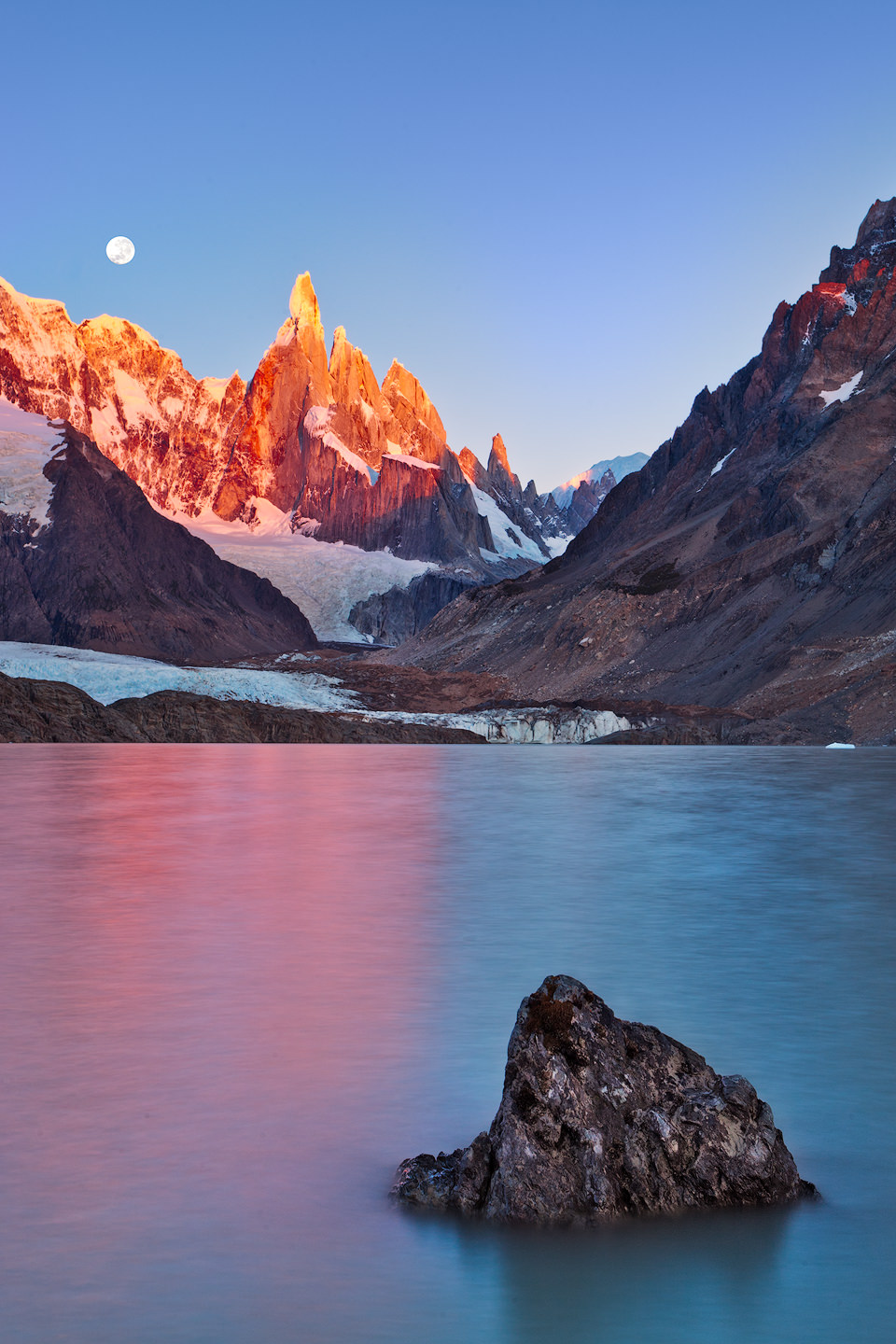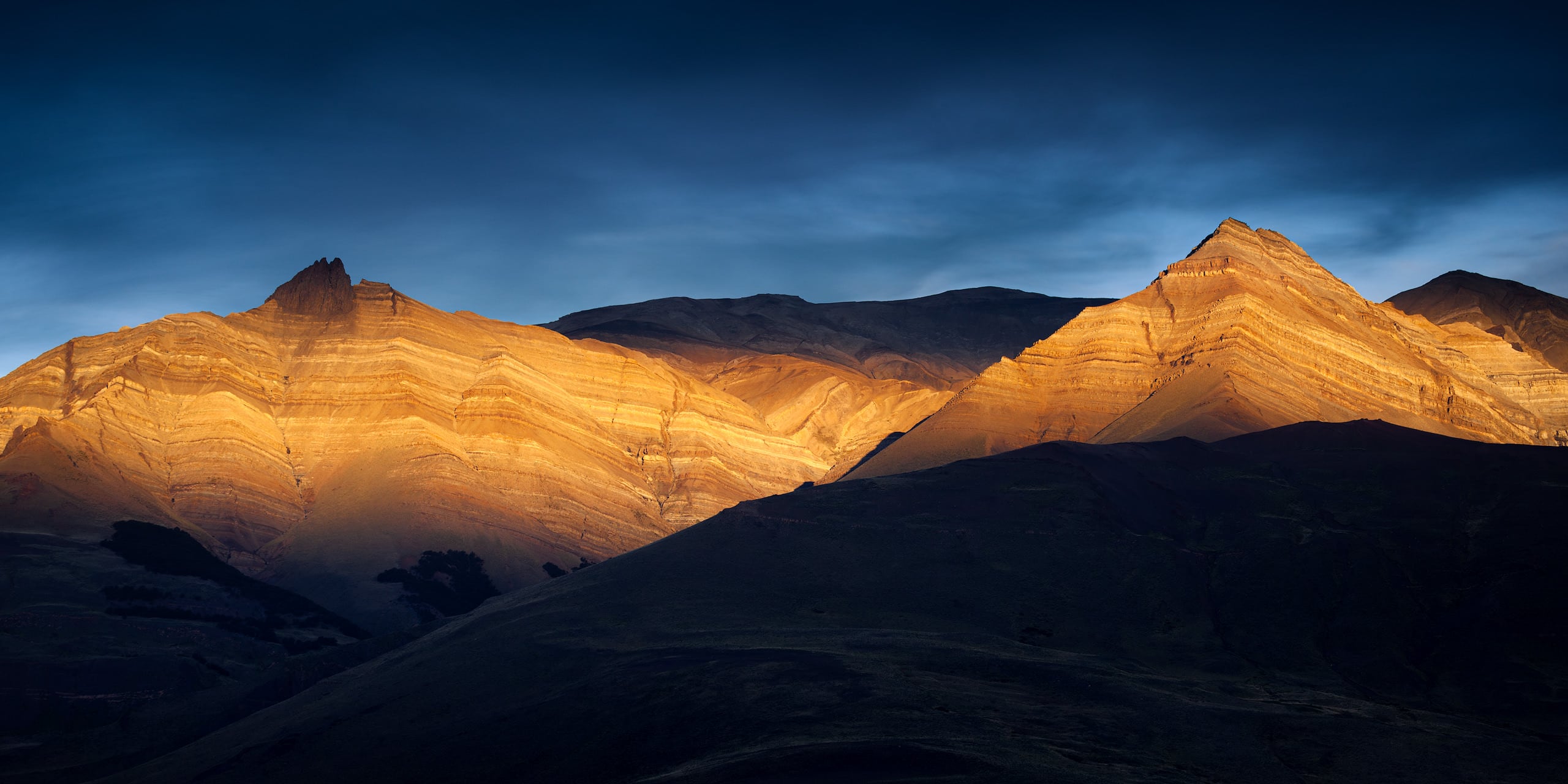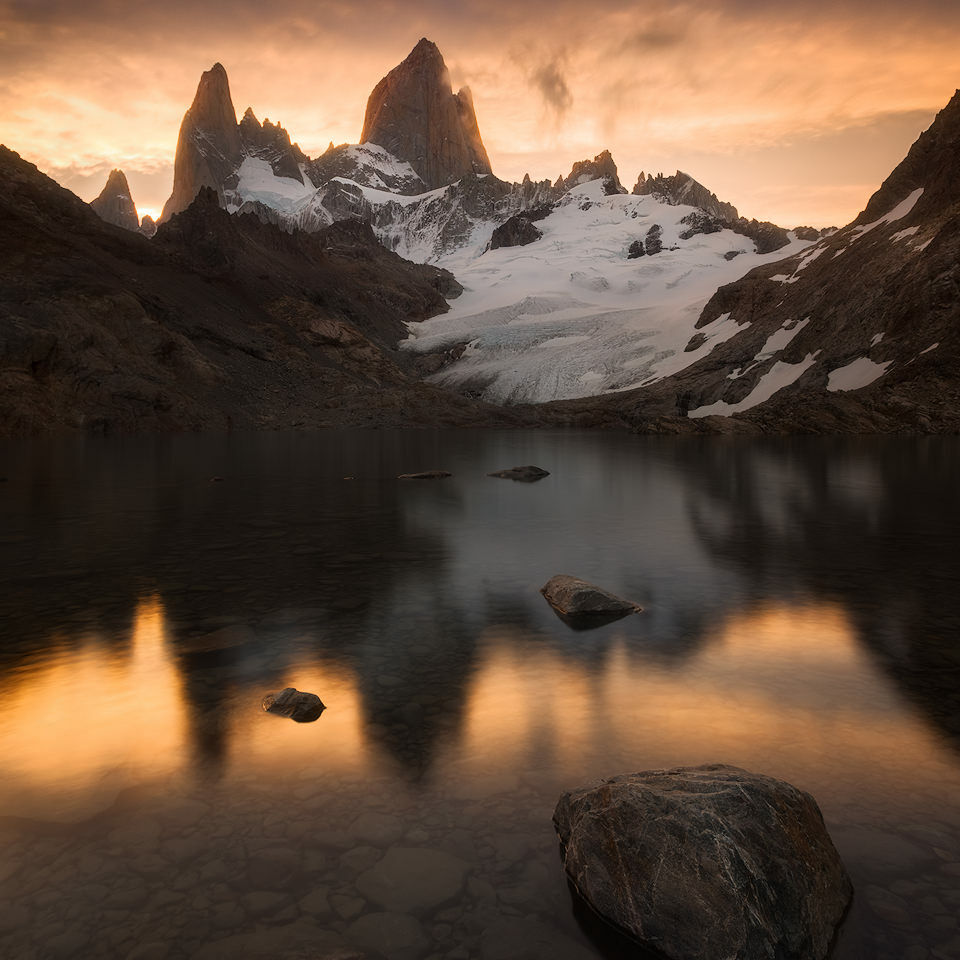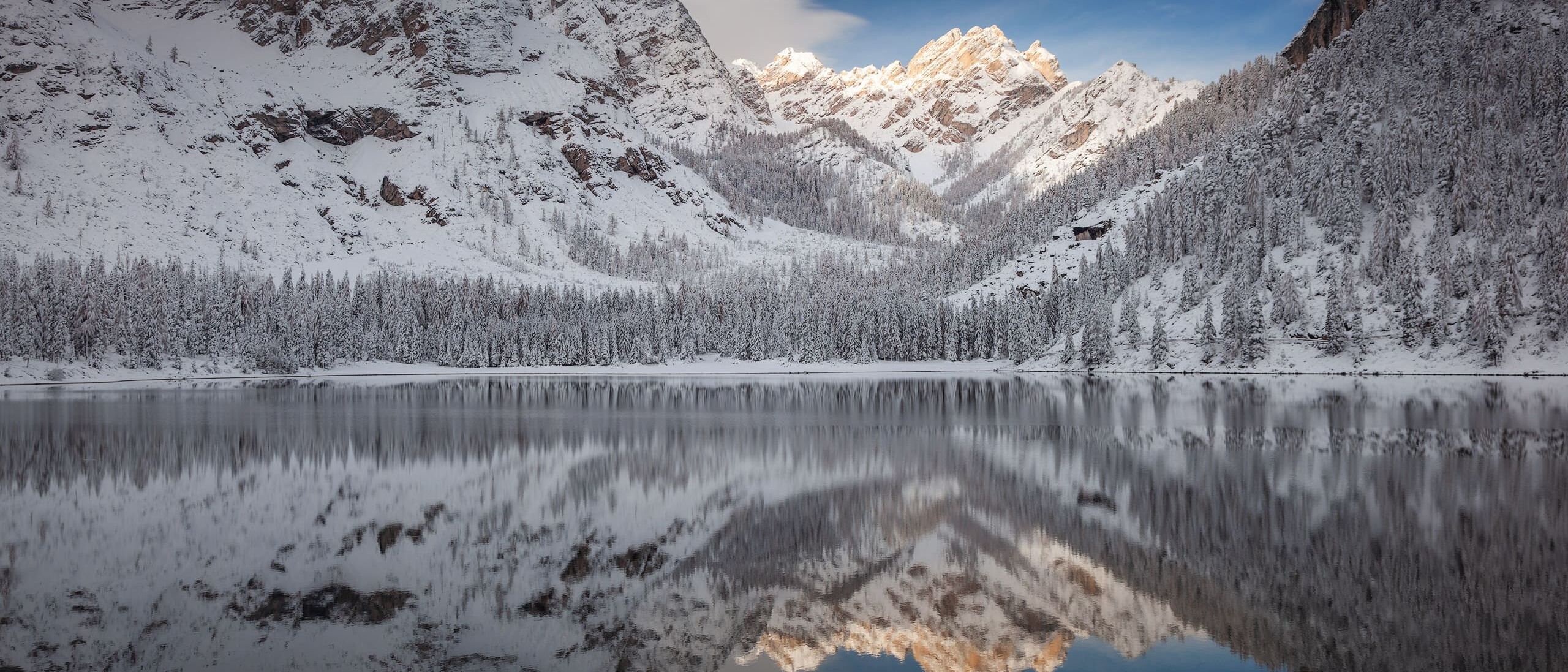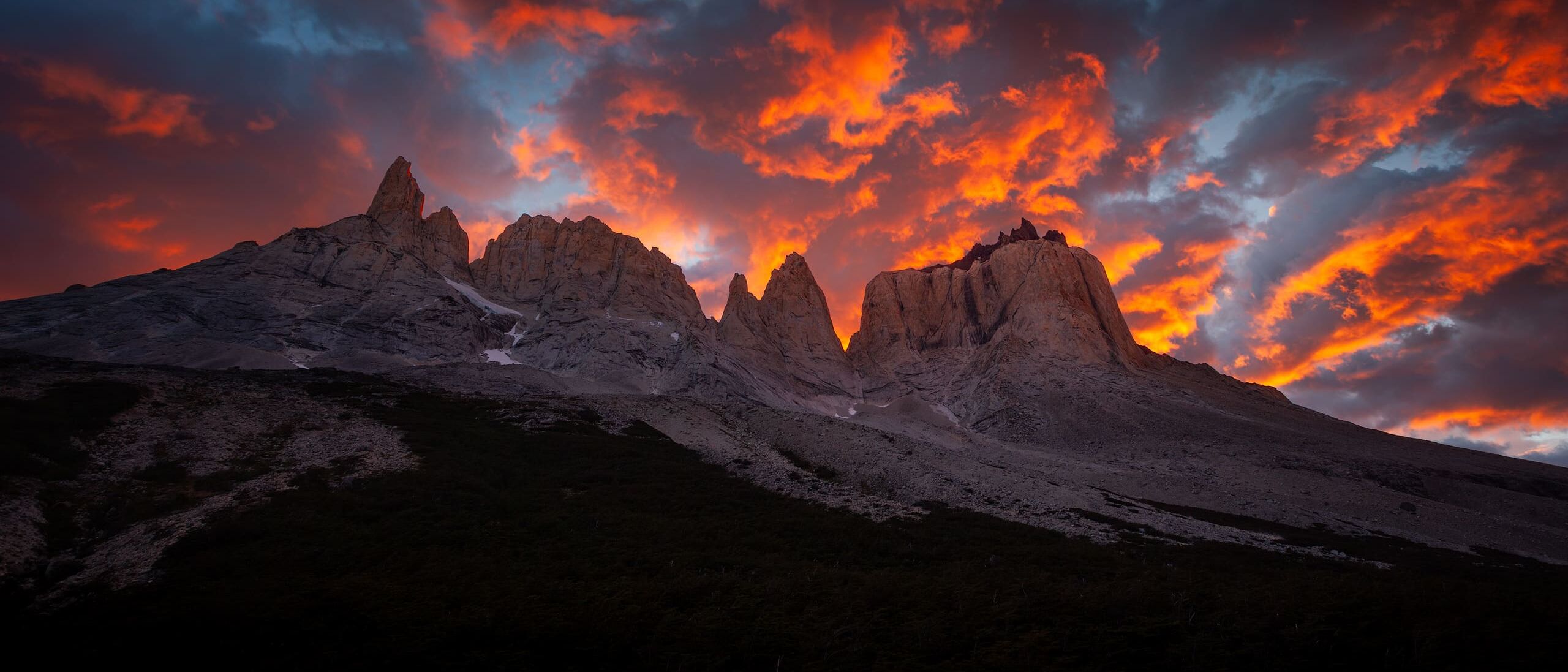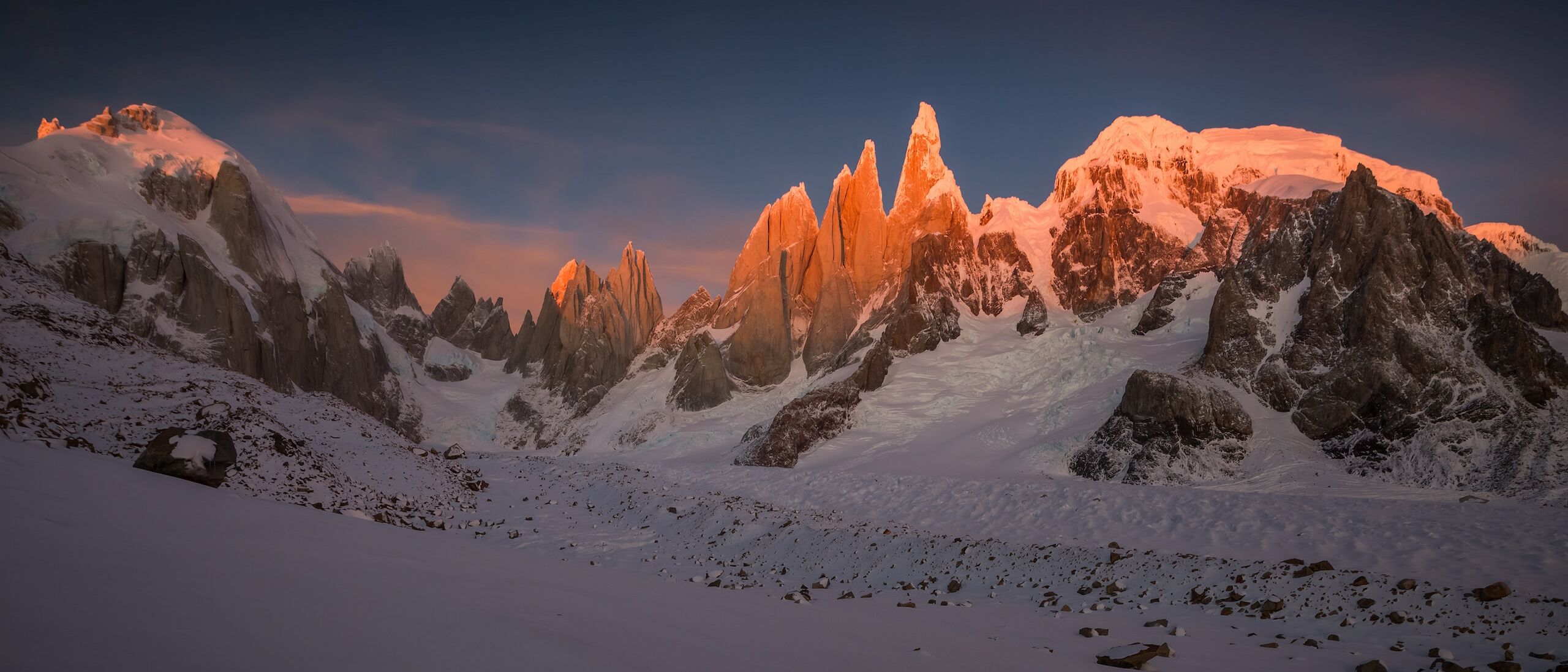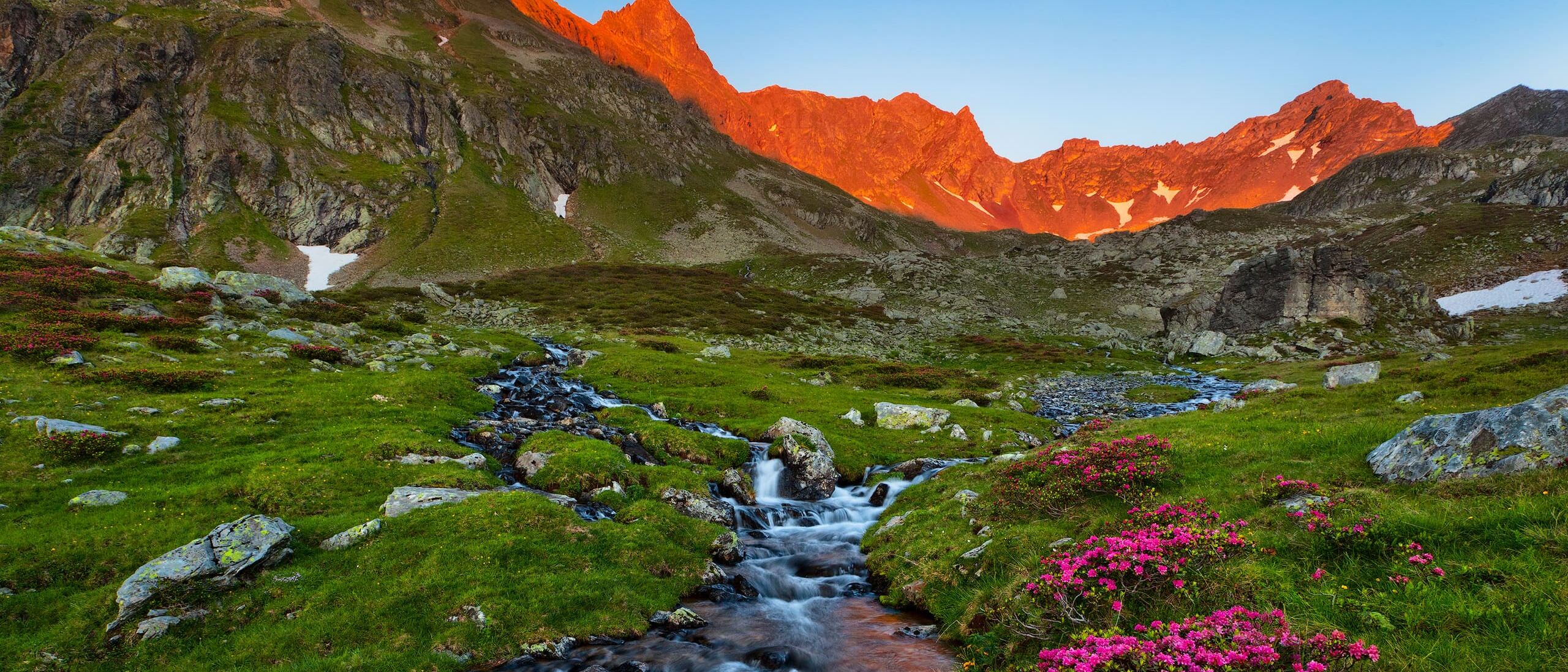Getting to El Chaltén took us longer than we thought. Our bus arrived late at night and we still had to find us a room. We ended up in a small hospedaje (I don’t remember the name) sharing our room with another couple. The next morning we got up early to find us a better place to stay and organize our trip into the park. El Chaltén provided everything we needed (apart from a tent we also managed find a few places that offered delicious food and even a shop with exquisite wines and homebrewn beer).
We had planned to walk the classic 3-day itinerary of Parque Nacional Los Glaciares and so we spent the next day organizing food and equipment. Once we had everything together we decided to start trekking around El Chaltén and to scout the village’s surroundings for a sunrise location. The one that was the easiest to reach was Mirador de los Condores. The next morning I got up 2 hours before sunrise and walked to the lookout again. It takes about 1 hour to get there. It was cold and I had to put on all the clothes I had with me. When the sun came up a few clouds were still hovering above the Fitz Roy massive. The first rays reached Cerro Fitz Roy and for a few seconds the peak was glowing red.
Day 1: Laguna de los Tres
After breakfast we left El Chalten for Fitz Roy basecamp, the first stop on our 3-day trek through Parque Nacional los Glaciares. Campamento Poincenot as the campground is also called is a 4 hours walk away from El Chalten. We followed a rather steep path that passes a lookout with a great view of the Fitz Roy massif. A stiff wind was blowing when we reached the lookout and despite the sun being very powerful it was rather cold. So we hurried on to the campground. We continued the path until we reach a little stream (Chorillo del Salto) were we stopped to take a few pictures. The light was harsh (it was early afternoon) so I decided to go for a black & white conversion utilizing the whole tonal range.
When we reached Campamento Poincenot we were a bit surprised to find around 50-60 tents and lots of trekkers. We had not expected to find that many people in a remote place like this. There were people from all around the world. Some were well equipped climbers and some were totally inexperienced tourists to say the least. Personally I think it’s good that a lot of people get to experience nature that way but I often doubt that some people realize where they are and what they are doing. I think that lots of travelers don’t know enough about nature and the environment. For some it is important to experience nature to learn their lessons, but some will never learn. The way they are traveling the world (including remote places), just following their guidebooks*, makes me sick.
I don’t consider myself a purist** but I am strictly against spring-break mentality in remote places. I don’t want to listen to any music, be it good or bad, when I’m in the mountains. And I definitely don’t want to have any liquor-drinking morons singing the whole night in a tent next to me.
To set my anger aside, I continued to climb after we had set up our tent. I followed the path to Laguna de los Tres. The path is very steep and it took me more than one hour to climb another 400m. Despite I only had my photo equipment and something warm to wear with me I was dripping with sweat when I reached the small lake below Fitz Roy. From there I had a great view of Cerro Fitz Roy and the surrounding peaks. After a short chat with two canadians, that had decided to spend their night up there, I descended to the shore to set up my tripod.
Chaltén as Fitz Roy was called by the indigenous people is a peak of 3.406m and is well known amongst climbers all around the world. Not only is it a great mountain to climb but also to photograph. Patagonia’s climate and strong winds are two important ingredients for spectacular cloud formations and sunrise/set colors. I was lucky that evening and experienced a great light show. The wind that had blown all day was almost gone and it was unexpectedly warm. I was glad being alone again up there and stayed way past sunset before I returned to the camp. It seemed like most people had gone to sleep when I arrived. I set my alarm for three hours before sunrise, but little did I know, I wouldn’t have needed an alarm anyways.
Day 2: Laguna Torre
The night was short, as the party next door continued. I barely slept and when my alarm rang I wasn’t in the mood for photography at all. The walk the day before had been more exhausting than expected. The sky was cloudy anyways so I decided to skip sunrise and get a little bit of rest. After breakfast we spent a few hours trekking to our last stop in Parque Nacional los Glaciares. It was windy and rather cold. The sun didn’t come out too many times and the peaks were hidden in clouds.
When we reached our final destination it seemed to become a bit better and after having set up our tent it was sunny. We sat at the shore of Laguna Torre cooling our sore feet in the freezing water and watching the clouds spin around Cerro Torre. After dinner almost all the clouds had disappeared and I started developing hopes for a nice sunset-shoot. I had scouted a nice rock that would work as an anchor in the foreground and returned there to await sunset.
Unfortunately the cloud hovering above Fitz Roy and opposing Cerro Torre wasn’t there to stay. It disappeared within a few minutes after I took this picture. During sunset I was facing something unexpected – a clear sky. After reading a lot about patagonian weather and our experiences on the W-Trek we had not expected to see blue skies while trekking in El Chaltén. Our backpacks were full of rain-gear. We were equipped for winterly conditions. But now we were facing a cloudless sky. Not even a single cloud was left to reflect that famous patagonian sunset light! It’s moments like these that remind me not to expect to much but instead make the best of any situation.
I had pictures of Cerro Torre and the milky way in my mind. I decided to get ready for a cold night outside. Two hours after sunset it was almost dark and I was in position. It was then, that I saw the enemy of all night-photography: a nice and bright full moon. Remember: make the best of it! With the sky getting brighter and brighter again I decided to go for startrails. Short startrails in this case.
We had set an early alarm for the next morning to watch the sun rise. Again, we woke up to cloudless skies. At first I was a bit disappointed, but then I spotted the full moon. Unlike the night before I liked what I saw. The moon was about to set behind Cerro Torre. I went back to the rock where I had been before and arrived just in time.
Cerro Torre itself is a breathtaking sight, but combined with some intense alpenglow it’s really unbelievable. The moon was just the icing on the cake. I could have sat there forever just watching the scenery. Unfortunately this was our last morning in the park and soon we found ourselves on the way back to El Chaltén, where we indulged in food and drinks.
But even after 3 days of photographing and trekking around El Chaltén I wasn’t done with Parque Nacional los Glaciares yet, and in the evening I gave Mirador de los Condores another shot. While the sunset behind Fitz Roy was mostly hidden by clouds there was a light show going on behind us. Despite having some of the most spectacular mountains of the world in front of me I turned around to take a picture of a far less impressive mountain range catching the last light. I guess it’s all about the quality of the light.
Despite the less than stellar conditions trekking in El Chaltén did not dissappoint at all. On the contrary – I was fixed. And in the meantime we already have scheduled another trip to Patagonia for 2012 and I can’t wait to go back there!
*If you would like to know more about how guide books are written I recommend to read Thomas Kohnstamm’s “Do Travel Writers go to Hell?”
** I am just a strong believer in “Leave no Trace”
Los Glaciares: Trekking around El Chaltén
- January 2011
- 3 Days / 2 Nights
Quick Facts
Information
Parque Nacional los Glaciares is a national park in the south of the argentinian part of Patagonia. Its most visited attraction is Glaciar Perito Moreno, a glacier of enormous dimensions. The real adventure waits in the northern part of the park though, where a small village called El Chaltén offers everything outdoor enthusiasts might be looking for.
How to get there
Since you will not need a car in El Chaltén you can easily hop on one of the busses taking you there from El Calafate – or Bariloche if coming from the north. In town and in the park your feet will have to do the work.
Where to stay
El Chaltén is full of all types of accomodations – you can chose anything between campgrounds all the way to luxurious estancias. Once you enter the national park you’ll have to bring a tent. The visitor’s center will give you up to date information about campsite in the park.
Why Go
If you are into the outdoors, then trekking in El Chaltén and around the famous peaks of Cerro Torre and Fitz Roy should be on top of your list. El Chaltén is hands-down the best place for outdoor lovers!
